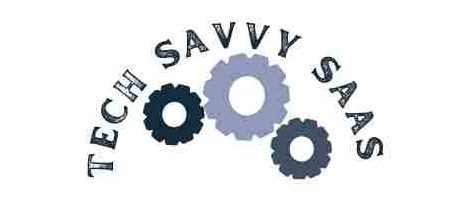In the fast-paced realm of modern business, staying ahead requires more than just keeping pace—it demands foresight, adaptability, and a proactive approach to technology. Future-proofing with tech is not merely a buzzword; it’s a critical strategy for businesses aiming to secure their relevance and longevity in an ever-evolving landscape.
Future-proofing with tech entails anticipating future changes in technology and adapting one’s business strategies accordingly. It involves leveraging emerging technologies, fostering a culture of innovation, and investing in digital transformation initiatives. These strategies are not just optional; they’re imperative for businesses striving for long-term success in today’s tech-driven world.
In this post, we’ll delve into the significance of future-proofing with technology and outline actionable strategies for businesses to implement. From embracing innovation to building agile workforces, we’ll explore how organizations can navigate the technological landscape to thrive in the future.

Embracing Innovation
Innovation isn’t just a buzzword; it’s a survival strategy in today’s fiercely competitive market. Countless examples abound of companies that failed to innovate and consequently fell by the wayside. Take, for instance, Blockbuster, a titan in the video rental industry that succumbed to the rise of digital streaming platforms like Netflix. Despite its dominance at the time, Blockbuster’s reluctance to innovate ultimately led to its demise.
To avoid a similar fate, businesses must foster a culture of innovation from within. This means encouraging employees to think creatively, take risks, and challenge the status quo. Companies like Google and Apple are prime examples of innovation-driven cultures that prioritize experimentation and out-of-the-box thinking. By empowering their workforce to innovate, these companies continually push the boundaries of what’s possible, staying ahead of the competition in the process.
But fostering innovation isn’t just about encouraging brainstorming sessions and creative thinking; it requires strategic planning and investment. According to research by McKinsey, companies that prioritize innovation outperform their peers in terms of revenue growth and profitability. This underscores the importance of not only embracing innovation but also allocating resources toward it.
Leveraging emerging technologies
In today’s rapidly evolving landscape, businesses must continually adapt to emerging technologies to maintain a competitive edge and future-proof their operations. Technologies such as artificial intelligence (AI), the Internet of Things (IoT), and blockchain offer immense potential for businesses across various industries.
AI, for example, has revolutionized industries ranging from healthcare to finance. According to a study by PwC, AI is projected to contribute up to $15.7 trillion to the global economy by 2030. One notable example of AI’s impact is in the healthcare sector, where AI-powered diagnostic tools have improved accuracy and efficiency in disease detection. Companies like IBM’s Watson Health and Google’s DeepMind are leading the charge in AI-driven healthcare solutions, showcasing the transformative power of this technology.
Similarly, IoT devices have transformed industries by enabling real-time data collection and analysis. In manufacturing, IoT sensors can monitor equipment performance and predict maintenance needs, reducing downtime and improving productivity. For instance, General Electric implemented IoT solutions in its factories, resulting in a 20% increase in efficiency and a 10% reduction in maintenance costs.
Blockchain, often associated with cryptocurrencies, offers benefits beyond finance. Its decentralized and immutable nature makes it ideal for secure data storage and transaction processing. Supply chain management is one area where blockchain is making waves, providing transparency and traceability from manufacturer to end consumer. Walmart, for instance, uses blockchain to track the journey of its products from farm to shelf, ensuring food safety and quality.
For businesses looking to leverage emerging technologies, it’s essential to identify solutions that align with their specific needs and objectives. Conducting thorough research and piloting projects on a small scale can help organizations assess the feasibility and potential impact of adopting new technologies. Additionally, partnering with technology vendors and consultants who specialize in emerging technology can provide valuable expertise and guidance throughout the implementation process.
AI and machine learning, in particular, are poised to drive significant changes in software solutions. From predictive analytics to personalized recommendations, AI-powered software can enhance user experiences and streamline operations. Companies like Netflix and Amazon leverage machine learning algorithms to analyze user behavior and deliver tailored content and product recommendations.
Investing in Digital Transformation
In today’s hyper-connected world, digital transformation isn’t just an option—it’s a necessity for businesses striving to remain relevant and competitive. By embracing digital technologies and overhauling traditional processes, organizations can unlock new opportunities for growth and innovation.
Digital transformation isn’t without its challenges, however. Common barriers include legacy systems, resistance to change, and a lack of digital skills among employees. According to a study by Deloitte, 94% of executives believe that digital transformation is crucial for their organizations, yet only 14% are confident in their ability to execute it successfully. Overcoming these barriers requires a strategic approach and strong leadership.
One actionable step for planning a successful digital transformation is conducting a thorough assessment of current processes and technologies. This involves identifying pain points, bottlenecks, and areas for improvement. For example, multinational conglomerate General Electric embarked on a digital transformation journey by analyzing its manufacturing processes and implementing IoT solutions to optimize efficiency and reduce costs.
Strategic planning is another key component of digital transformation. This involves setting clear objectives, defining key performance indicators (KPIs), and allocating resources effectively. Research from McKinsey shows that companies with a clear digital strategy are 2.5 times more likely to achieve their digital transformation goals. For instance, retail giant Walmart developed a comprehensive digital strategy focused on e-commerce, omnichannel integration, and customer experience enhancement, resulting in significant revenue growth and market share gains.
Technology investments are also critical for driving successful digital transformation initiatives. This includes investing in cloud computing, data analytics, AI, and automation tools to streamline processes and improve decision-making. According to a survey by Gartner, 75% of organizations plan to increase their spending on digital transformation in the next year. For example, multinational technology company Cisco invested heavily in cloud infrastructure and digital collaboration tools to support remote work during the COVID-19 pandemic, enabling seamless workflow continuity and employee productivity.
The Harvard Business Review highlights the transformative impact of digital transformation on business growth. Companies that prioritize digital initiatives experience higher revenue growth, increased profitability, and greater market share gains compared to their peers. For example, digital-native companies like Amazon and Airbnb disrupted traditional industries by leveraging digital technologies to deliver innovative products and services to customers.
Building agile workforces
In today’s dynamic business landscape, the ability to adapt to technological changes is paramount for success. This necessitates building agile workforces—teams that can quickly pivot, innovate, and embrace new technologies to stay ahead of the curve. But what exactly does it mean to have an agile workforce, and how can organizations cultivate such adaptability?
One key aspect of building agile workforces is upskilling existing employees. This involves providing opportunities for ongoing learning and development to ensure that employees have the skills and knowledge needed to thrive in an ever-changing environment. According to research by LinkedIn, 94% of employees say they would stay at a company longer if it invested in their learning and development. For example, multinational technology company Google offers employees access to online courses and certifications through its Grow with Google program, empowering them to continuously upskill and stay relevant in the tech industry.
Recruiting tech-savvy talent is another strategy for building agile workforces. Hiring individuals with a strong foundation in technology and a willingness to learn new skills can inject fresh perspectives and expertise into the organization. Companies like Facebook and Amazon prioritize technical competency and innovative thinking in their hiring processes, seeking candidates who demonstrate a passion for technology and a track record of adaptability. By attracting top tech talent, organizations can infuse their teams with the skills and capabilities needed to navigate the digital age.
Numerous companies have successfully transformed their workforces to thrive in the digital age. Take, for example, software giant Microsoft, which underwent a significant cultural shift under the leadership of CEO Satya Nadella. By fostering a growth mindset and embracing agility, Microsoft transformed from a traditional software company into a cloud computing powerhouse, achieving record-breaking revenue and market capitalization in the process.
Agile methodologies and continuous testing play a crucial role in workforce development. Agile frameworks like Scrum and Kanban enable teams to collaborate effectively, respond to change rapidly, and deliver value to customers iteratively. Companies like Spotify and Netflix have adopted agile practices to empower their teams to experiment, innovate, and deliver high-quality products and services at scale. Continuous testing, meanwhile, ensures that software applications meet quality standards and user expectations throughout the development lifecycle. By automating testing processes and incorporating feedback loops, organizations can accelerate delivery cycles and minimize defects.
Key Takeaway: 9 Tips for Future-Proofing with Tech
- Embrace Innovation: Foster a culture of innovation within your organization, encouraging creativity and experimentation.
- Leverage Emerging Technologies: Identify and adopt relevant emerging technologies such as AI, IoT, and blockchain to stay ahead of the competition.
- Invest in Digital Transformation: Allocate resources towards digital transformation initiatives to streamline processes and improve efficiency.
- Build Agile Workforces: Invest in upskilling existing employees and recruiting tech-savvy talent to ensure your workforce can adapt to technological changes.
- Prioritize Strategic Planning: Develop a clear digital strategy with defined objectives and key performance indicators to guide your transformation journey.
- Allocate Technology Investments: Invest in cloud computing, data analytics, AI, and automation tools to drive innovation and growth.
- Embrace Agile Methodologies: Adopt agile frameworks like Scrum and Kanban to promote collaboration, flexibility, and rapid iteration.
- Continuous Testing: Implement continuous testing practices to ensure the quality and reliability of your software applications throughout the development lifecycle.
- Stay Informed and Adapt: Keep abreast of technological advancements and industry trends, continuously adapting your strategies to remain competitive in the ever-changing landscape.
Conclusion
In conclusion, future-proofing businesses with technology is not just a choice—it’s a necessity for long-term success in today’s digital world. By embracing innovation, leveraging emerging technologies, and investing in digital transformation, organizations can position themselves for growth and resilience in the face of uncertainty. We encourage you to stay informed, adapt proactively, and take decisive action to future-proof your business for the challenges and opportunities that lie ahead. Subscribe to our newsletter for ongoing insights and guidance on future-proofing strategies.
More Post
- Essential Tips for Success in Cloud Computing Trends
- How Tech Visionaries Shape the Digital Future ?Redefining Technology and Industry Standards
- How SaaS Solutions Drive Business Growth? Key Benefits for Modern Businesses
- How Developers are Driving Innovation with AI, Blockchain, IoT, and Cloud Computing
- How AR, AI, and MR are Transforming Reality: The Quantum Leap in Tech Trends






